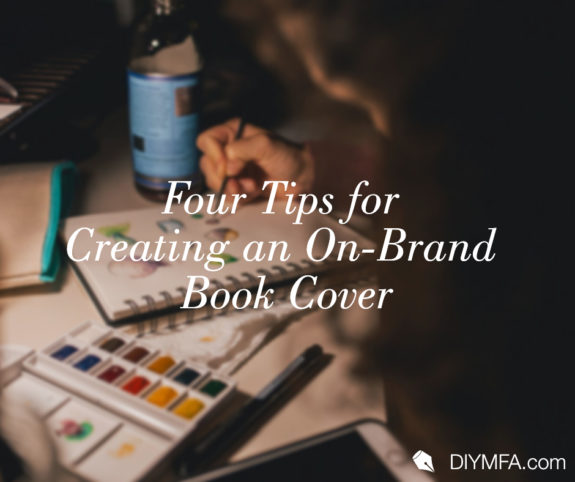In previous articles, I’ve discussed some author branding basics, including key questions to ask when building your brand and different ways you can build your brand, even when you’re super busy.
Remember, your brand is more than just a snazzy logo or website. It represents who you are as a writer. It’s your values, your personality, and the unique stories that you contribute to the literary community. Additionally, when you work on building your author brand, you should also be considering your ideal readers. Who are you writing for? What do they like? And perhaps most importantly, how does your brand work to attract those ideal readers?
Once you’ve clearly defined your author brand and your ideal readers, it’s important to begin thinking about how you might apply that information to your “products.” In this case, the most important product you have to sell as an author is your book (or books!). Everything else, such as a website, social media, or newsletters (while definitely important) should come second.
For today’s article, I’ll be focusing on one of the first things your readers will notice when looking at your book: the cover.
If you’ve decided to go the self-publication route with your work, the entire cover design process will fall to you, so it’s important to understand how a good book cover can positively impact your author brand. Even if you ultimately decide to hire a cover designer, you should still be aware of what makes a good, on-brand cover.
At the end of the day, an awesome cover will help you sell more books, so read on for some tips on how to create a cover that closely aligns with your author brand.
1) Study Covers In Your Genre
Whether you’re writing a steamy romance or a thriller, it’s important to first look at and analyze the covers of the top-selling books in your chosen genre. An easy way to do this is to utilize Amazon. For example, if I were writing in the paranormal romance genre, I would want to select and study that sub-category on Amazon. If you take a look at Amazon’s current best selling paranormal romance novels, you’ll notice that the majority of the covers feature darker colors and imagery. Additionally, the majority of the covers utilize similar fonts.
How do you use this information? Ultimately, you will want to emulate the best-selling covers as much as you can. This isn’t to say that your cover can’t be unique to your own personal brand. As a matter of fact, your book cover should be unique and include information unique to your brand! However, it’s important to stick to genre conventions.
For example, if I were to design my own paranormal romance cover, I might want to stick to the darker colors and imagery, in addition to using a font that is similar to those found on the best-seller list. I wouldn’t want to stray too far from those conventions (perhaps by creating a bright pink cover with loopy fonts), as that might alienate my ideal readers who have come to expect certain tropes and elements within the paranormal romance genre.
2) Embrace Simplicity
If you’re just starting out with cover design, or have chosen to hire a designer, it can be tempting to try and fit a bunch of symbols, characters, colors, and fonts into a single design. Resist this temptation!
When in doubt, it’s always best to keep your covers simple. If you are self-publishing on Amazon, you need to keep in mind that your cover will appear as a thumbnail on the page until a potential reader clicks on it. Even on a book’s full Amazon page, the cover isn’t all that big. As such, make sure that your title and author name are prominent and readable. They shouldn’t be drowning in a bunch of images or symbols.
3) Use High-Quality Images and Good Color Contrast
When it comes to images, you will want to make sure that they are of high quality (not pixelated, or blurry). Additionally, don’t just pull images from Google and slap them on your cover. When using any kind of image for a book cover, you need to make sure that you are legally able to use it. Some stock images and fonts do require that you purchase a license, so be careful.
With any color schemes you use, ensure that there is adequate contrast. As cover designer Derek Murphy writes over at CreativIndie, “A lot of authors ask for covers that ‘pop.’ And many designers have no idea what this means. But I’ve narrowed it down to contrast. You want a strong light to dark transition, with strong shadows.”
4) Consult With a Professional Designer If You Can
Many authors who are self-publishing for the first time likely don’t have a lot of money set aside for things like marketing materials and cover design. However, if you are not inclined towards learning how to design your own covers, it would definitely be beneficial to invest in and work with a professional designer. I would argue that a good cover is a lot more important than paid advertising, or even a premium-style website, especially if you’re just starting out. Focus on making your book as appealing as possible to your ideal readers, then focus on the rest!
Back to you, writers! What kinds of book covers are you most drawn to? Let me know in the comments!

Manuela Williams is a Las Vegas-based writer and editor. She is the author of Ghost In Girl Costume, which won the 2017 Hard To Swallow Chapbook Contest. Her second poetry chapbook, Witch, is forthcoming from Dancing Girl Press. When she’s not writing, Manuela is busy drinking coffee and spending time with her blind Pomeranian, Redford. You can connect with her on LinkedIn and Pinterest.







